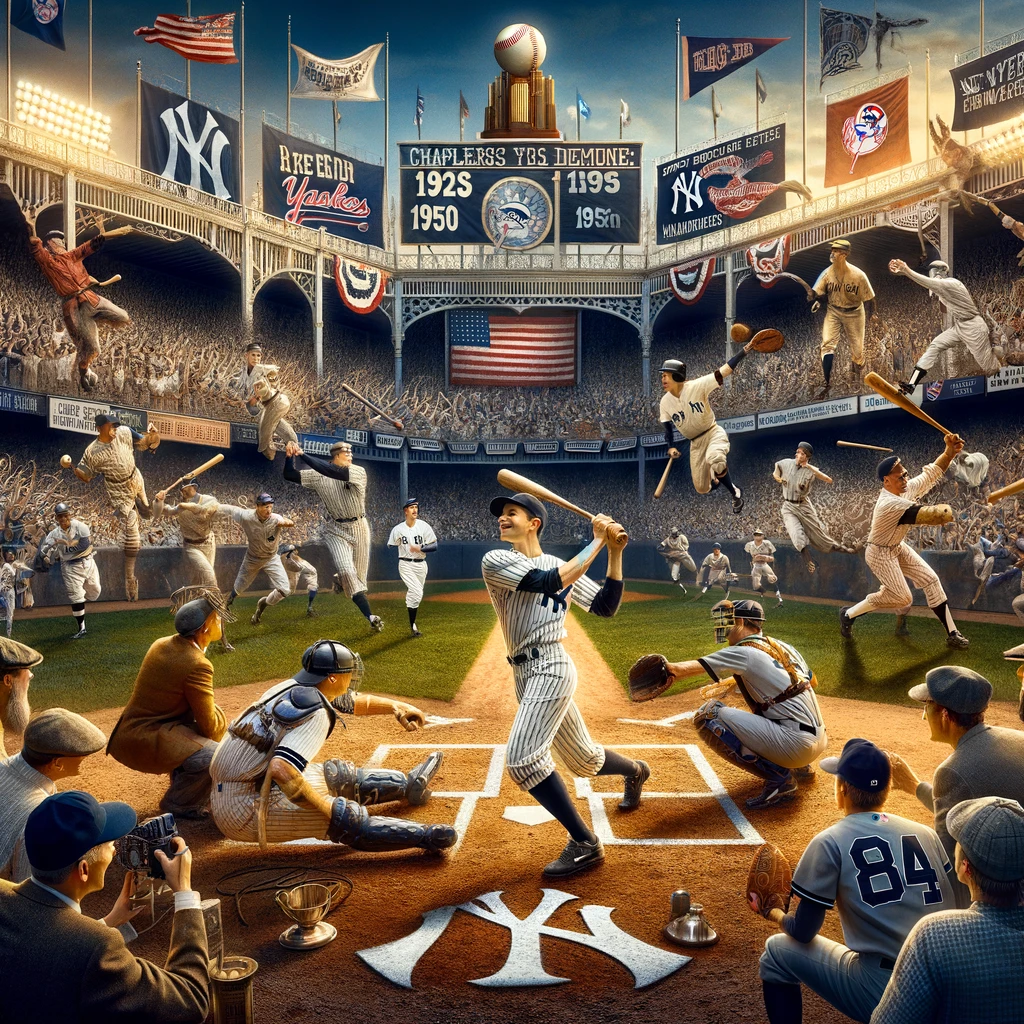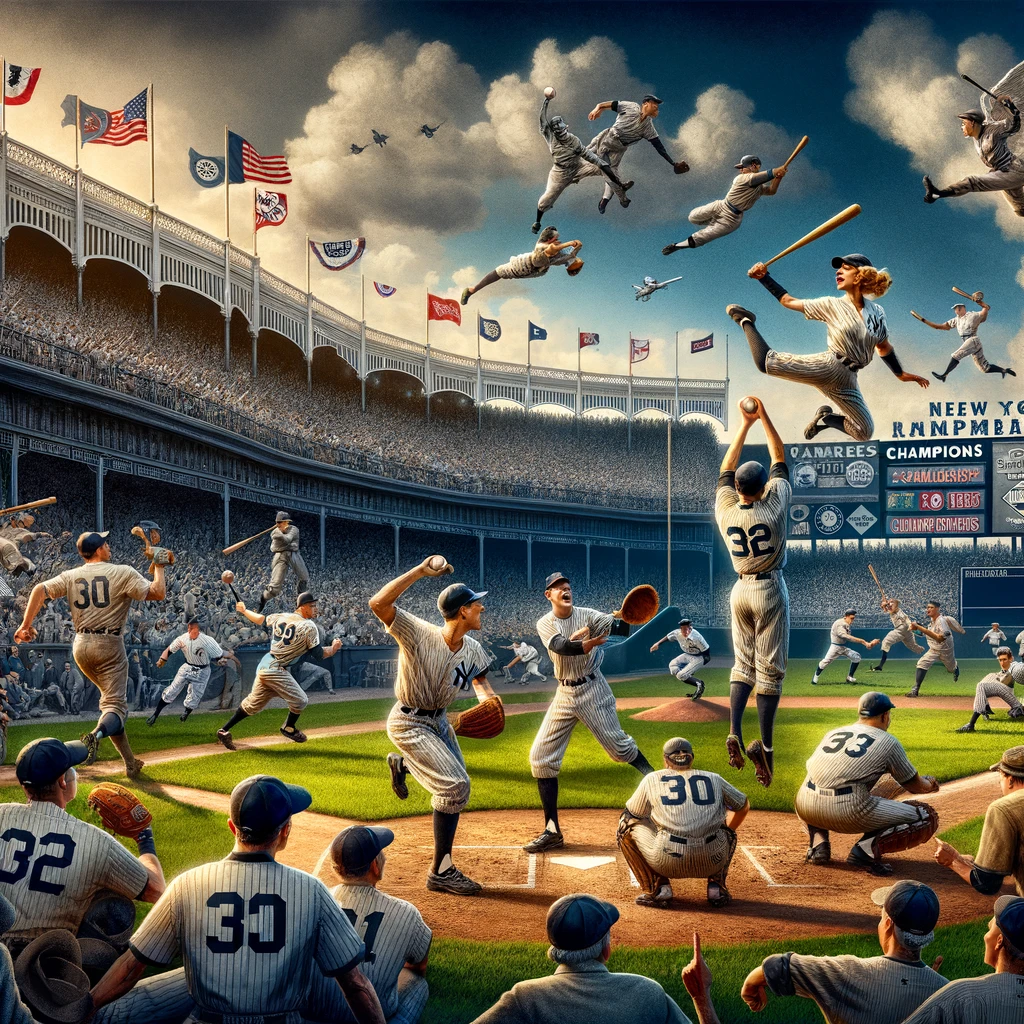Baseball, America’s pastime, has witnessed the rise and fall of many teams, but none have quite captured the essence of triumph and legacy like the New York Yankees. From their inception to the modern era, the Yankees have not just played the game; they’ve defined it. This article delves into the rich history of this iconic team, exploring their journey from humble beginnings to becoming the synonym for success in the world of baseball.
The Early Years: Birth of a Dynasty (1900s-1920s)
The New York Yankees, originally known as the Baltimore Orioles, were one of eight charter franchises of the American League in 1901. Relocating to New York in 1903, they were renamed the New York Highlanders, a nod to their elevated home field, Hilltop Park. It wasn’t until 1913 that the team adopted the name ‘Yankees’, resonating with the spirit of New York.
During these formative years, the Yankees struggled to make a significant impact in the league. It was the acquisition of Babe Ruth in 1920 that marked a turning point. Ruth, a charismatic slugger and pitcher, transformed the team’s fortunes and ushered in an era of dominance. His arrival coincided with the move to the Polo Grounds, shared with the New York Giants, setting the stage for future success.
The Babe Ruth Effect (1920s-1930s)
Babe Ruth’s impact on the Yankees and baseball was monumental. He brought an unprecedented power-hitting style, shattering records and drawing crowds. The 1920s saw the Yankees win their first World Series title in 1923, followed by back-to-back championships in 1927 and 1928. The 1927 team, often considered the greatest in baseball history, boasted the fearsome “Murderers’ Row” lineup, featuring legends like Lou Gehrig and Earle Combs.
The Yankees’ dominance continued into the 1930s, despite the Great Depression. Gehrig, known as the “Iron Horse,” became a symbol of resilience and consistency, playing 2,130 consecutive games. The team added four more World Series titles in 1932, 1936, 1937, and 1939, solidifying their status as a baseball powerhouse.
The Mantle and DiMaggio Era (1940s-1960s)
The 1940s and 1950s were marked by the emergence of Joe DiMaggio and Mickey Mantle, two of the greatest players in baseball history. DiMaggio, known for his 56-game hitting streak in 1941, brought elegance and skill to the game, leading the Yankees to nine World Series titles during his tenure.
Mantle, who debuted in 1951, was a switch-hitting phenomenon with immense power and speed. He became the face of the franchise in the post-DiMaggio era, leading the Yankees to seven World Series titles. His triple crown win in 1956 and his epic home run battles with Willie Mays and Duke Snider defined a golden age of baseball.
A New Home: Yankee Stadium (1923-1973)
In 1923, the Yankees moved into the original Yankee Stadium, the first triple-deck venue in baseball. Known as “The House That Ruth Built,” it became a cathedral of baseball, hosting some of the sport’s most iconic moments. From Gehrig’s farewell speech to Don Larsen’s perfect game in the 1956 World Series, the stadium was at the heart of the Yankees’ lore.
The team continued their winning ways into the 1960s, but by the end of the decade, the aging stadium and team signaled the end of an era. The stadium underwent extensive renovations in the mid-1970s, coinciding with a brief downturn in the team’s fortunes.
The Steinbrenner Era and Resurgence (1970s-2000s)
In 1973, George Steinbrenner purchased the Yankees, ushering in a new era of management and renewed success. Steinbrenner was known for his fiery personality and willingness to spend on top talent. This approach brought mixed results initially, but it eventually led to a resurgence in the late 1970s.
With stars like Reggie Jackson, known as “Mr. October” for his postseason heroics, and pitcher Ron Guidry, the Yankees captured two more World Series titles in 1977 and 1978. However, the 1980s were a period of relative drought in terms of championships, despite having star players like Don Mattingly and Dave Winfield.
The 1990s marked a return to glory under manager Joe Torre. With a core of homegrown talent including Derek Jeter, Mariano Rivera, Andy Pettitte, and Jorge Posada, the Yankees won four World Series titles in five years (1996, 1998-2000). The 1998 team, with its then-record 114 regular-season wins, is often ranked among the greatest teams in baseball history.
The 21st Century: A Continuing Legacy
The new millennium saw the Yankees maintain their status as a perennial contender. They won their 27th World Series title in 2009, a testament to their enduring excellence. The era also saw the retirement of iconic players like Jeter and Rivera, marking the end of a remarkable chapter in the team’s history.
The Yankees’ journey is a tapestry of legendary players, historic moments, and a relentless pursuit of excellence. Their legacy is not just in the championships won but in the indelible mark they have left on the sport of baseball. As they continue to write new chapters, the New York Yankees remain a symbol of sporting greatness, embodying the spirit of competition and the pursuit of greatness.

A New Era: Challenges and Triumphs (2010s-Present)
The 2010s were a period of transition for the Yankees. The retirement of core players from the late 90s and early 2000s left big shoes to fill. However, the Yankees, true to their history, retooled and remained competitive. Stars like Aaron Judge and Giancarlo Stanton brought a new era of power-hitting to the Bronx, reminiscent of the Ruth and Mantle days. Despite not winning a World Series in the 2010s, their consistent playoff appearances and the emergence of a new core kept the Yankees in the spotlight.
Embracing Technology and Analytics
In the modern era, the Yankees, like many other teams, have embraced technology and analytics to enhance player performance and scouting. This shift represents a significant change from the Steinbrenner era’s emphasis on star power and big spending. The focus on analytics has helped the team identify and develop talent more effectively, ensuring a steady pipeline of players ready to contribute at the major league level.
Challenges and Controversies
No journey is without its challenges, and the Yankees have faced their fair share. The 2000s and 2010s saw several controversies, including performance-enhancing drug allegations against some of their players. These incidents tested the team’s resilience and highlighted the ever-evolving challenges in professional sports. The Yankees, while dealing with these issues, have continued to strive for a culture of excellence and integrity.
The Yankee Stadium: A Modern Cathedral (2009-Present)
In 2009, the Yankees moved into the new Yankee Stadium, a state-of-the-art facility that honors the history and tradition of the original. This modern ballpark has witnessed its share of memorable moments, including the Yankees’ 27th World Series championship in its inaugural season. The new stadium, with its blend of modern amenities and classic design, continues to be a mecca for baseball fans worldwide.
The Yankees in Popular Culture
The New York Yankees are not just a baseball team; they are a cultural icon. From movies and TV shows to music and fashion, the Yankees’ influence extends far beyond the baseball diamond. The iconic “NY” logo and pinstripe uniforms are recognized globally, symbolizing excellence, tradition, and a winning spirit. The team’s impact on popular culture is a testament to its storied history and widespread appeal.

Legacy of Leadership and Philanthropy
The Yankees’ legacy is also marked by their leadership and philanthropy off the field. The team and its players have been involved in various charitable endeavors, impacting communities in New York and beyond. Their commitment to giving back is a crucial part of the Yankees’ identity, reinforcing their role as a responsible and engaged member of the community.
The Future of the Franchise
As the Yankees look to the future, the quest for excellence remains unchanged. The team continues to adapt to the evolving landscape of baseball, always aiming to stay at the forefront of the sport. With a commitment to developing talent, embracing innovation, and maintaining a winning culture, the Yankees are poised to continue their legacy of championships and success.
Conclusion: A Timeless Legacy
The history of the New York Yankees is a chronicle of baseball greatness. From Babe Ruth and Lou Gehrig to Derek Jeter and Aaron Judge, the Yankees have been home to some of the game’s most iconic players. Their 27 World Series titles, numerous American League pennants, and countless individual accolades stand as a testament to their enduring legacy.
The Yankees’ story is not just about the trophies in the cabinet; it’s about the impact they’ve had on baseball and sports culture. It’s a tale of resilience, innovation, and an unwavering pursuit of excellence. As they continue to compete at the highest level, the New York Yankees remain a symbol of greatness, inspiring fans and players alike.
The New York Yankees’ journey through baseball history is a reminder of the power of sport to captivate, unite, and inspire. Their legacy of championships is not just a record of wins and losses; it’s a narrative of passion, determination, and the relentless pursuit of greatness. As the Yankees forge ahead, their story continues to unfold, promising more unforgettable moments and a legacy that will be remembered for generations to come.
